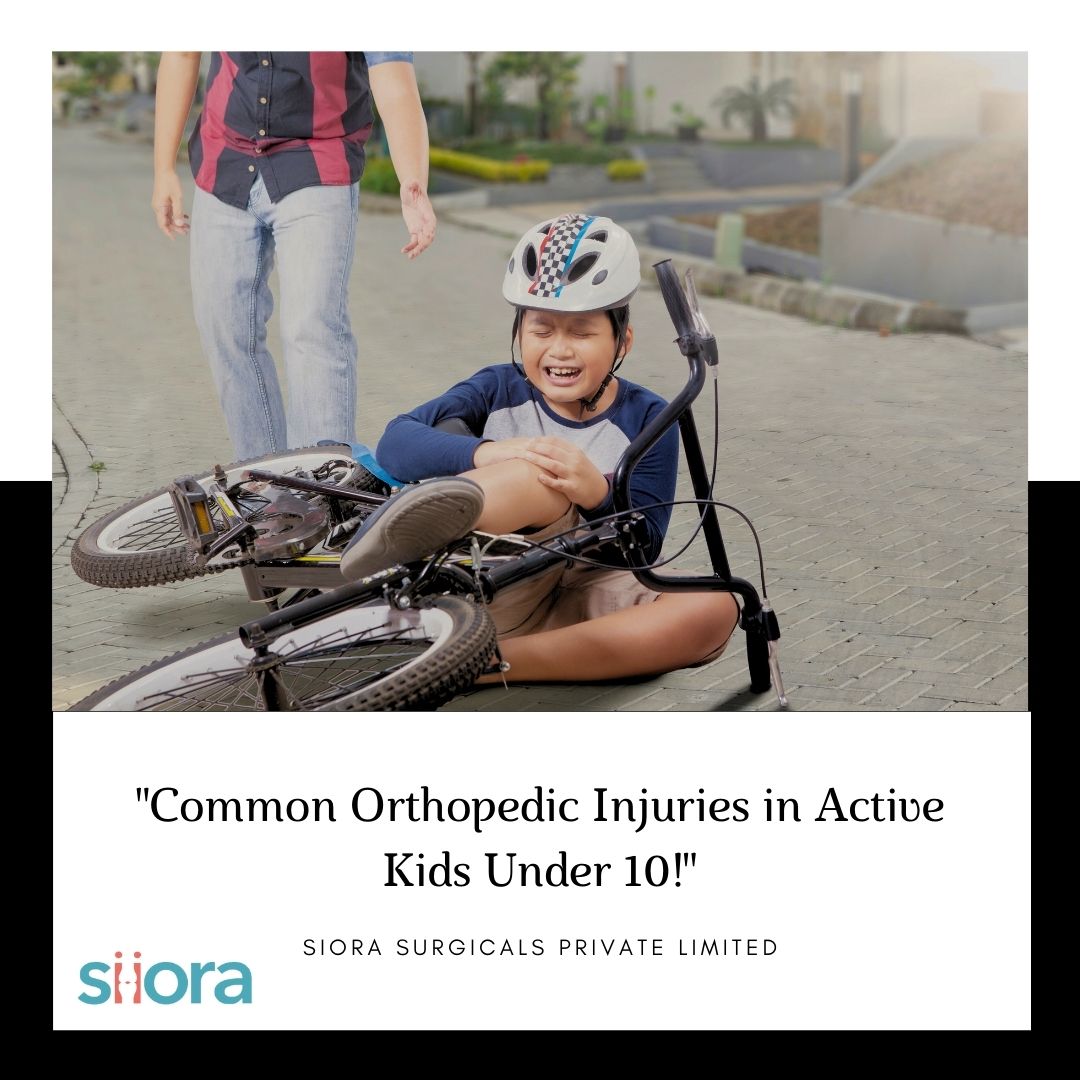
Our little bundles of energy are constantly on the move, exploring the world with boundless enthusiasm. This active lifestyle, while wonderful for their development, can sometimes lead to bumps, bruises, and even more serious injuries. As parents, it's important to be aware of common orthopedic injuries in children under 10, so we can spot them early and ensure proper treatment.
What Are the Common Orthopedic Injuries in Kids Below 10 Years of Age?
Fractures
These are the most frequent orthopedic injuries in children. Unlike adults, their bones are still growing and more flexible, meaning they're less likely to experience complete breaks. Instead, you might see greenstick fractures (a partial break) or buckle fractures (a bend in the bone). Common culprits include falls from bikes, playgrounds, or heights. Signs of a fracture include pain, swelling, difficulty bearing weight, and sometimes deformity in the affected area. Severe fractures may need stabilization with Orthopaedic Implants.
Sprains and Strains
These soft tissue injuries are equally common. Sprains involve stretched or torn ligaments, while strains affect muscles or tendons. They often occur during sports activities or falls. Kids might complain of pain, tenderness, swelling, and difficulty moving the affected joint. The RICE principle (Rest, Ice, Compression, Elevation) is a great first-aid approach for both sprains and strains.
Overuse Injuries
Young athletes pushing themselves in sports or repetitive activities can develop overuse injuries. These include Osgood-Schlatter disease (painful bump below the knee), Sever's disease (heel pain), and Little League elbow (inner elbow pain). Symptoms typically involve localized pain that worsens with activity. Early intervention, including activity modification and physical therapy, can help prevent these from becoming chronic.
Growing Pains
These are a frequent source of worry for parents, but thankfully, they're harmless. Growing pains typically occur at night or in the early morning, affecting the legs (especially the calves and thighs). They usually don't cause redness or swelling and resolve on their own. Gentle massage or a warm bath can offer comfort.
Dislocations
These happen when bones are jolted out of their normal position in a joint. While less common than Simple Fractures, they can be quite painful and require immediate medical attention. Dislocations often occur in the elbow, shoulder, or finger. Signs include severe pain, deformity, and inability to move the joint.
When to Consult a Doctor?
While some bumps and bruises can be treated at home with rest and TLC, it's crucial to seek medical attention if your child experiences:
- Severe pain or swelling
- Difficulty bearing weight or moving a limb
- Deformity in the affected area
- Numbness or tingling
- Persistent limping (after a few days)
- A high fever accompanying the injury
How to Prevent Orthopedic Injuries in Kids?
Here are some tips to keep your little adventurer safe:
Proper supervision
Keep an eye on your child during playtime, especially when they're trying new activities.
Age-appropriate equipment
Ensure bikes, scooters, and other equipment are the right size and have proper safety features.
Protective gear
Encourage helmets and pads during activities like biking, skateboarding, or rollerblading.
Warm-up and cool-down
Inculcate stretching and light exercises before and after sports practices.
Listen to their body
Teach your child to communicate any pain or discomfort they experience.
By being aware of common orthopedic injuries and taking preventive measures, we can help our children stay active and explore the world with minimal bumps along the way. Remember, early diagnosis and treatment can ensure a speedy recovery and get your little one back on their feet in no time.
To learn more about recent trends in the orthopedic industry, register for Orthopedics 2024.